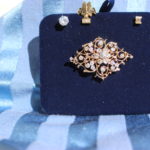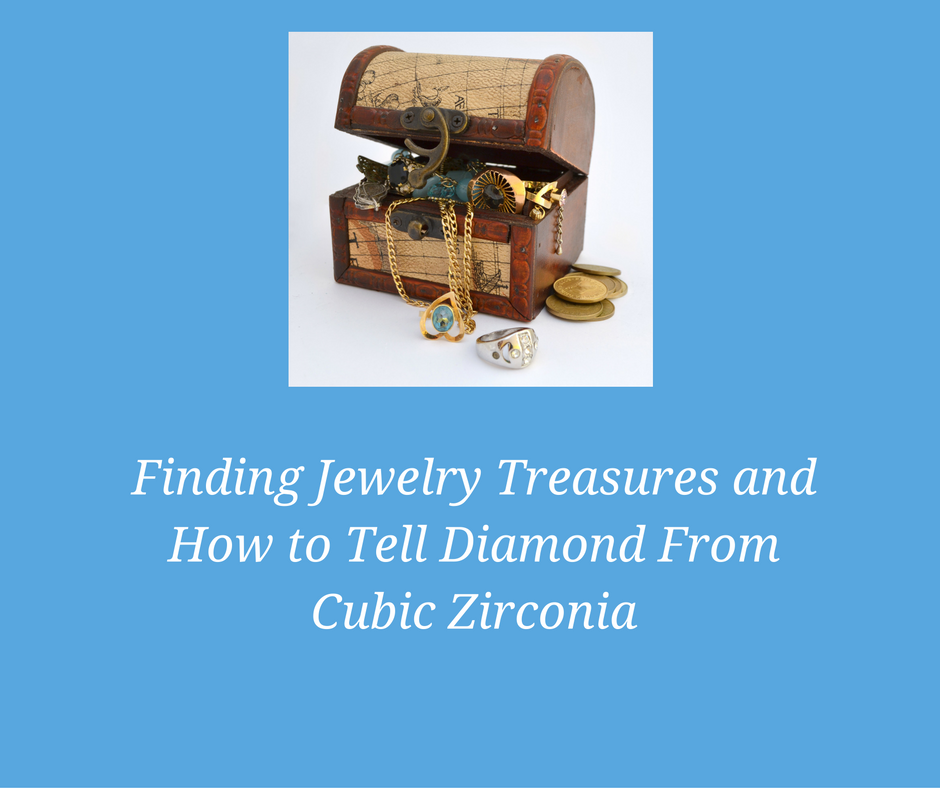Could It Be a Diamond?
Have you ever been lucky enough to find what you thought was a diamond ring or earring? You know, as you’re going out to your car from the grocery store or gym, and something shiny or sparkly catches your eye? So you pick it up, hoping it will be a valuable treasure.
Most of the time, our wishful thinking is deflated only to learn that the stone is cubic zirconia, or CZ for short. A diamond simulant, because it simulates a real diamond, CZ is lab created and has been substituted for diamond in jewelry since the 1970’s.

There are several stones used as substitutes for diamond. Some natural, clear gemstones, like sapphire and topaz have become popular stand ins for diamonds and are set in gemstone jewelry to make it more cost friendly. Other diamond substitutes are man made in laboratories, like cubic zirconia and mossanite. (Note: almost every gemstone has a lab created equivalent; so clear sapphire can also be lab created)
For now, we’re only going to focus on how to tell cubic zirconia from diamond. These are the most commonly mistaken stones found in fun fashion jewelry you’ll commonly find in thrift stores and yard sales.
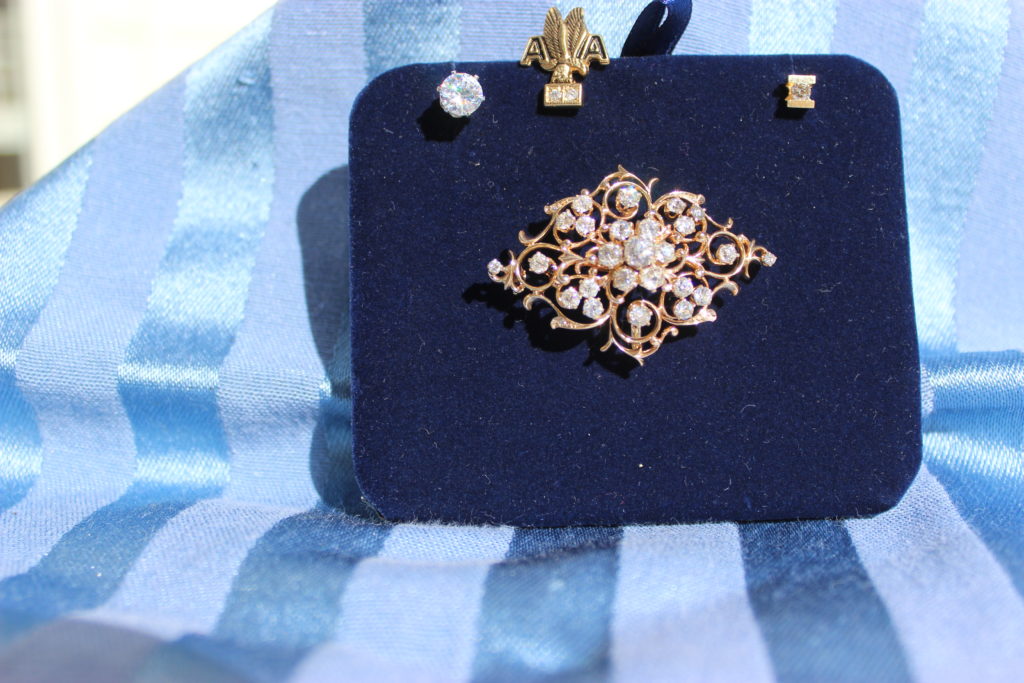
[bctt tweet=”Inherited, received as a gift, or found in a parking lot, knowing how to easily spot a diamond imposter is key to understating the value of jewelry set with what may or may not be diamonds.” username=”jewelrynavig8r”]
Become a Diamond Detective
Three ways to tell whether you may have found diamond jewelry
Some tests to distinguish CZ from diamond only work if the stones are out of their settings. Unless it’s yours or from jewelry you found, it’s unlikely that a yard sale host would let you pry out the stone in question! So, without dismantling the piece of jewelry, here are a few tips on how you can tell CZs from diamonds already set in jewelry.
Precious Metals Are Used to Set Precious Stones
Diamonds and gemstones are usually set in a precious metal, like gold (yellow, white or rose), platinum or palladium. Identifying the metal in which possible gemstones are set is an easy place to start if you know what to look for.
Pure gold is 24 parts gold, or 24 karat. It’s too soft to be used to set gemstones or worn as jewelry, so gold is combined with compatible alloys that strengthen in to hold up to jewelry set with gemstones.
In the United States, the lowest allowable purity is 10 karat, or 10/24ths gold weight purity. 14 karat is 14/24ths gold weight purity, and 18 karat is 18/24ths gold weight purity.
Numeric stamps or markings of 10, 14, or 18 kt or karat indicate the gold purity of jewelry.
There may be other notations besides the numeric weight purity, like the European method of marked weight purity as a percentage, and whether the metal is gold plated.
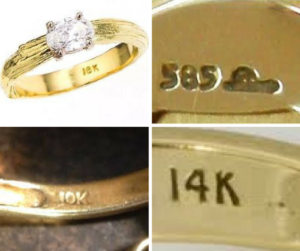
Diamonds are valuable and generally costly, so will be more likely to be set in precious metal. CZ which is inexpensive and less likely to be set in an expensive precious metal.
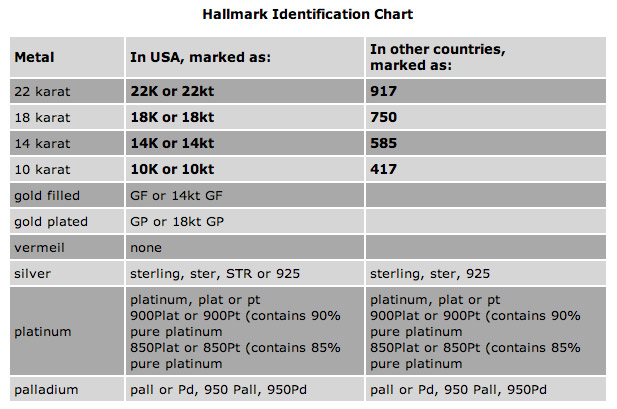
Silver and Gold Plated Jewelry
Check the metal finish of jewelry. Is it wearing off, revealing a different color metal underneath? Can you see gold metal under silver plating, or is the metal under a silver plating duller?
Often CZs are set in sterling silver jewelry, stamped 925. The absence of a karat purity stamp is a strong indication of inexpensive pot metal used in costume and fashion jewelry, and often set with CZ.
Diamond Edges and Facets Tell the Truth
The hardness of a stone relates to how well it takes a polish. Diamonds are the hardest gem material within a relative scale of gem hardness, called the Moh’s Hardness Scale, named for the gemologist who developed it. Because of its exceptional hardness, diamonds polish is high and shiny. The facet junctions, or where the cuts, or facets meet, have precise, clean and straight edges.
CZ’s lower hardness compared to diamond reveal two more outward characteristics that make it different from diamond.
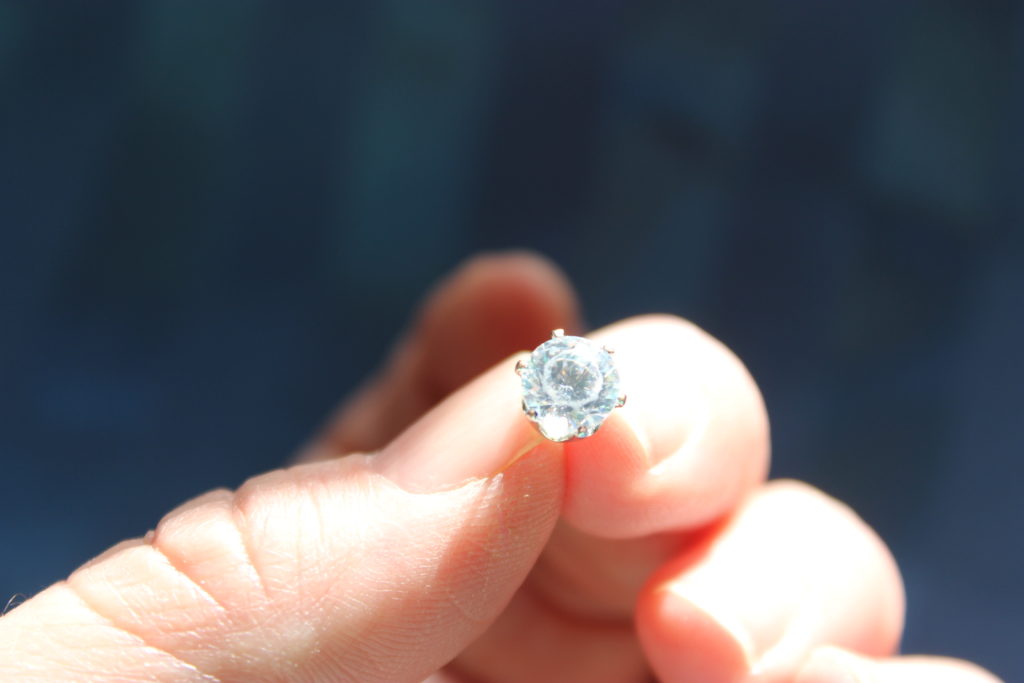
CZ scratches fairly easily, especially if worn in an engagement ring or tennis style bracelet, and its facet junctions are not as crisp and precise as a diamond’s.
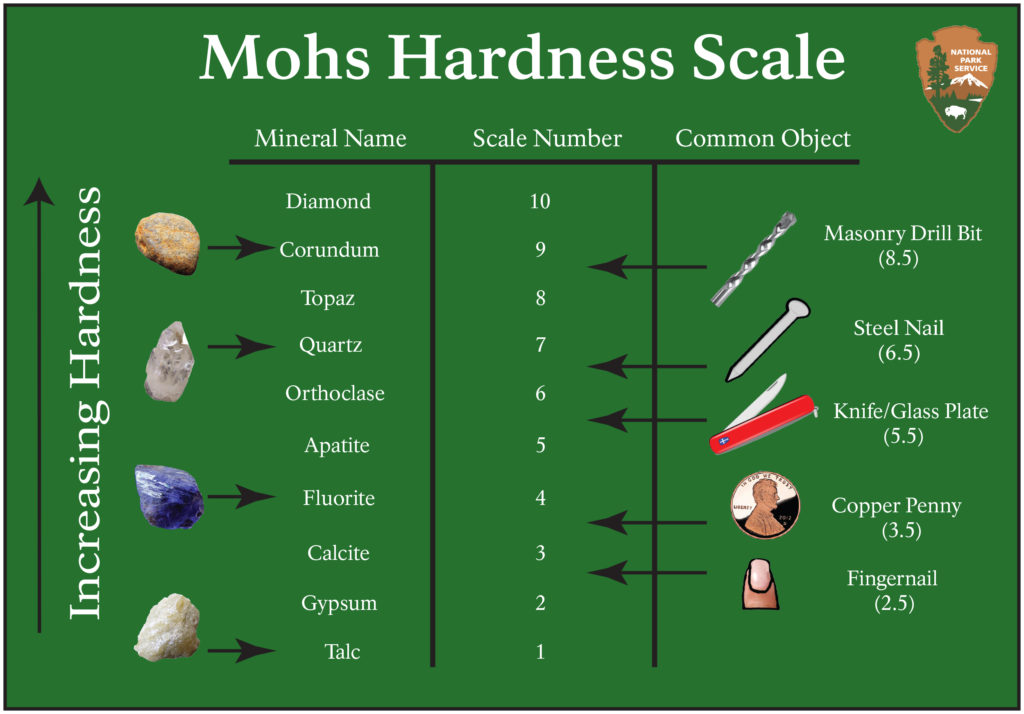
Comparing Sparkle and Shine
Refractive index is the measurement of how much light is bent, then returned out through the top of a stone as sparkle, or brilliance. Each gemstone has a different refractive index. This is helpful as an identification tool and is relative to how much light is returned through the top of the stone.
The refractive index of diamond (2.417) is higher than CZ (2.176), and will return more light back through the surface of the stone.
Dispersion (also called fire when describing the intensity of diamond’s rainbow effect of light refracting through it) is the property of how light breaks into spectral colors when traveling through the gemstone.
The dispersion of CZ is higher than diamond, and a good indicator of its identity.
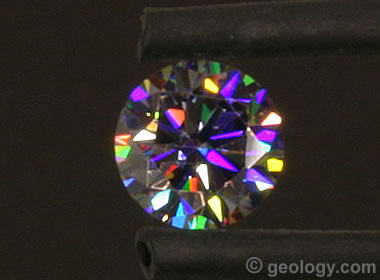
Go Find Your Treasures!
It takes practice to tell the difference between cz and diamond, but here’s a quick review:
Look closely at the metal in which the stone or stones are set:
♦Does it have a purity hallmark stamp inside or anywhere on the piece or its components, like on an earring post, bracelet or chain clasp, or inside of the ring?
♦If the stone is set in metal stamped with a purity karat mark, and not plated, this indicates use of a precious metal, there’s a good chance the stone is a diamond.
♦Does the metal look faded, or is its silver plating wearing to show brassy or gray metal underneath?
Look closely at the stones for any signs of scratches or wear, and how smooth and clean the facets are.
♦If the facets edges aren’t sharp, it’s probably not a diamond.
♦If the stone is scratched and abraded (faded from many scratches), it’s most likely not a diamond, and could be cubic zirconia, or CZ.
Look a the overall appearance of the stone:
♦Does it sparkle too much to be diamond? When you compare enough CZ to diamond, it becomes easier to detect it.
These simple but helpful observations will help you easily identify diamond from CZ the next time you find a sparkling treasures in a parking lot, yard sale, or your very own jewelry box!
